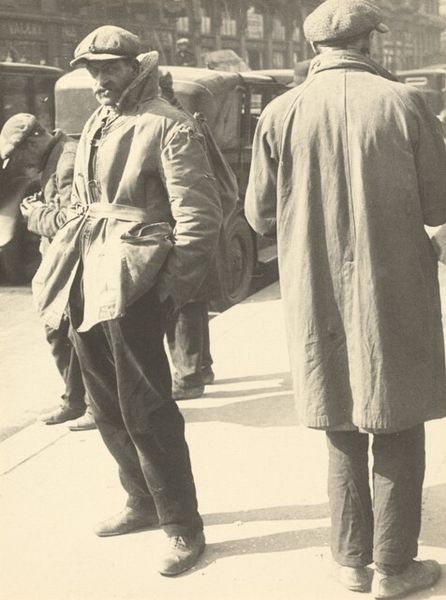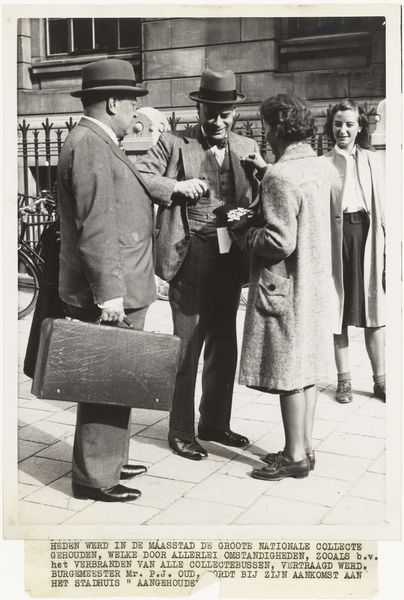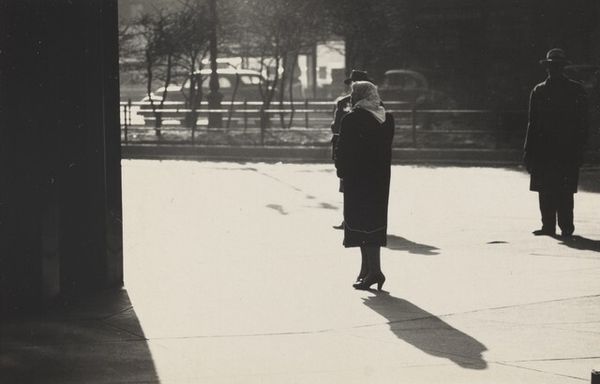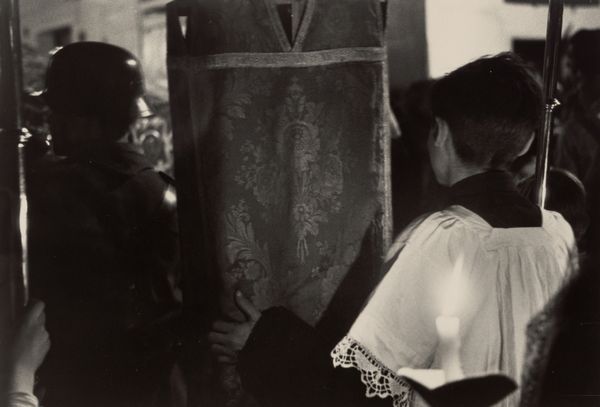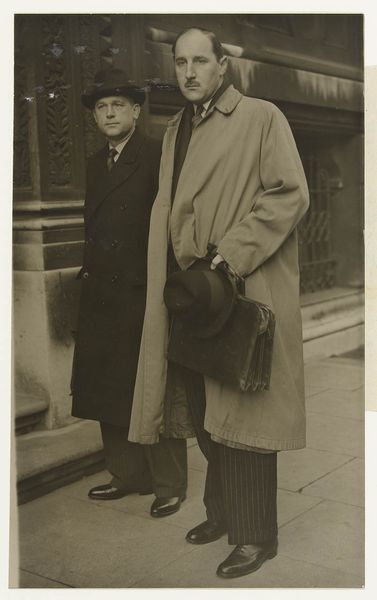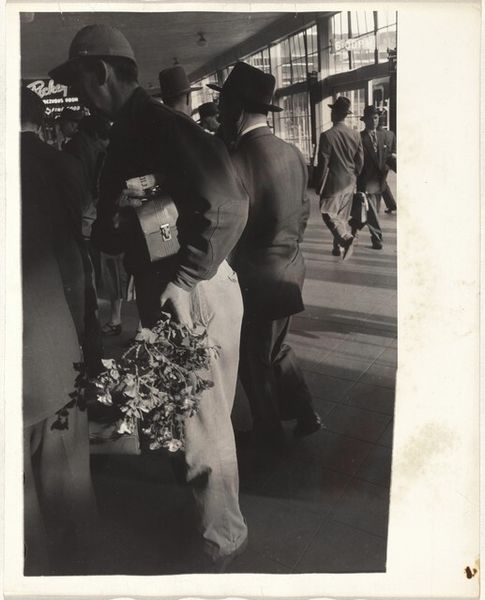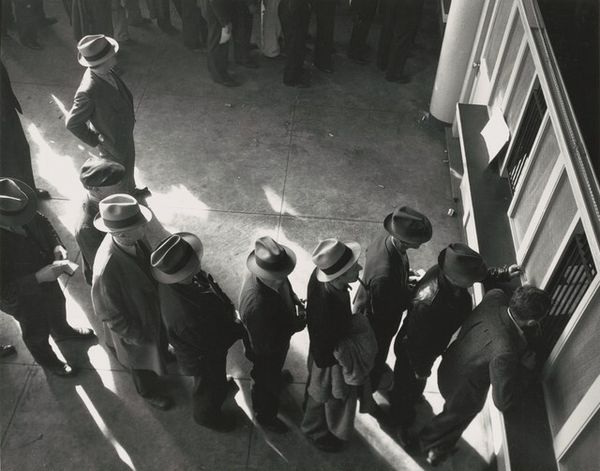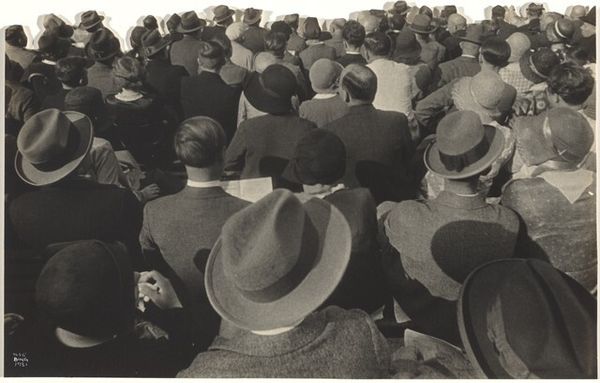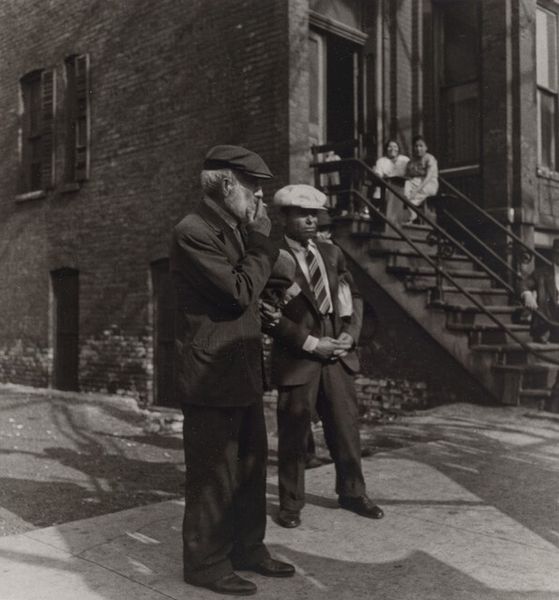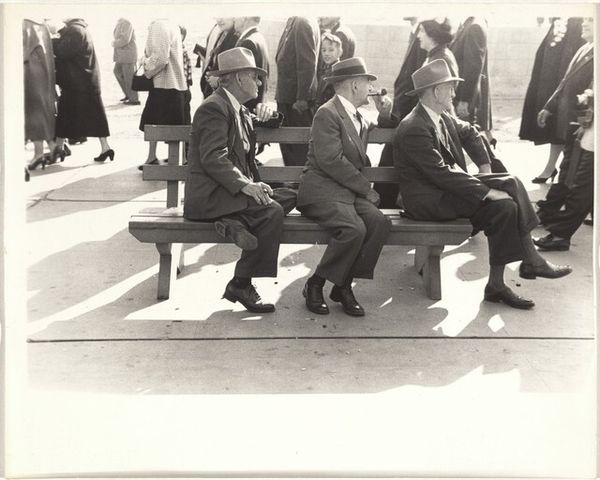
Dimensions: image: 35.1 x 22.2 cm (13 13/16 x 8 3/4 in.) sheet: 35.2 x 31.6 cm (13 7/8 x 12 7/16 in.)
Copyright: National Gallery of Art: CC0 1.0
Editor: This is "Tulip/Paris," a gelatin-silver print taken by Robert Frank in 1950. I find its starkness compelling; the figures are rather austere, but there’s a subtle tension introduced by the flower hidden behind the man's back. What draws your eye in this piece? Curator: The distribution of tones constructs the image. Consider how Frank uses light and shadow to direct the viewer’s gaze. The dark coats against the lighter background establish depth. The verticality of the tulip provides an insistent, almost defiant linear contrast against the bulk of the figures. Editor: That’s interesting; I hadn’t considered the lines so consciously. The tulip almost feels out of place, disrupting the somber mood. Is that contrast intentional, do you think? Curator: Intentionality is difficult to ascertain definitively. But if we consider how the tonality isolates the tulip and draws the viewer in, the object becomes increasingly semiotic. Does it function as a signifier for something else entirely, or is the surface of the object and its photographic rendering the primary visual concern? Editor: So, it's less about what the tulip represents symbolically and more about how its presence shapes the composition? Curator: Precisely. How does the artist direct our perception and interpretation of forms, and how are meaning-making possibilities shaped by composition? Editor: This has shifted my view quite a bit. I was immediately caught up in trying to understand the hidden meaning, but analyzing the relationships between forms and tonal ranges is far more stimulating. Curator: Indeed. Through attending to such intrinsic formal qualities, an avenue toward interpretation will become clear, not only on this piece but within the photographic medium itself.
Comments
No comments
Be the first to comment and join the conversation on the ultimate creative platform.
